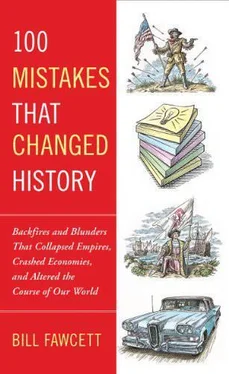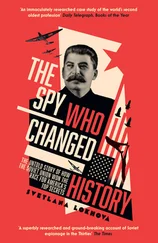When a quarter of the buyers of your product suddenly have no money, then your sales are down 25 percent. So you have to lay off some of your workers, cut wages, or eliminate benefits to enable your business to survive. But increasing the number of employed and paying workers less mean that sales for everyone are down again. The unemployed or financially strapped workers have less money to spend. As they continue to spend less, domestic sales continue to plummet and more workers lose their jobs. This cycle of unemployment creating more unemployment, which Smoot-Hawley reinforced, continued until World War II and wartime spending ended it.
The Smoot-Hawley Act had exactly the opposite effect of what was intended. Rather than helping to end a depression, which was started mostly by bad monetary policies, the tariffs it created made the financial situation much worse. Those tariffs caused a trade war that guaranteed that the 1930s saw not just another recession, but the Great Depression.
Reed Smoot and Willis Hawley were soundly defeated in the 1932 elections. Those workers whose jobs they had destroyed voted them out. By 1944, most nations had done away with the worst of the tariffs the bill had created and the postwar recovery became the greatest expansion of wealth in recorded history. It is only in the last few years that a return to protective tariffs for some businesses have reappeared. They were a mistake that changed the world and made a bad economic situation terrible. Let us hope today’s leaders have learned from history.
A Failed Recipe
1930
One day in 1930, the innkeeper of the Toll House Inn wanted to make something different as a dessert. Her name was Ruth Wakefield, which I mention because we should all be grateful to her. She was making a type of butter cookie that had been around since the colonial times. To make these cookies different, she decided to add a chocolate flavor to them. Normally, a baker would accomplish this by adding cocoa powder. The problem was Mrs. Wakefield was out of cocoa powder. So she decided to substitute what she had on hand. The innkeeper and baker cut up a Nestle’s chocolate bar and dropped the pieces into her dough. After all, the temperature at which cookies bake is hot enough to melt chocolate, or so she thought. She later admitted that she assumed the chocolate would melt into the cookies, giving them a nice, even chocolate flavor. The innkeeper had expected to pull out chocolate cookies, but to her surprise the pieces of chocolate remained intact. Though they were a bit melted, rather than chocolate cookies, she had butter cookies with pieces of chocolate in them. She called them her Toll House crunch cookies, but they are known today as chocolate chip cookies. Her reward from Nestle, whose sales skyrocketed after they put her recipe on their packaging, was a lifetime supply of chocolate. Here is one mistake that definitely changed the world for the better. Yumm.
The Schwarze Kapelle
1938
This mistake was probably the greatest missed opportunity in the twentieth century. It occurred in August 1938 and involved the British prime minister, Neville Chamberlain. Those who have read any history of World War II have already heard about how appeasement instead of strength eventually led to the shooting part of World War II, when Hitler invaded Czechoslovakia later that year. What is less well-known is the tremendous opportunity Chamberlain had laid at his door and passed up. Though in making this blunder he had help from many others, including Winston Churchill.
It was in August 1938 that a well-respected noble and land-owner, Ewald von Kleist-Schmenzin, arrived in England. He represented a secret organization in Germany known as the Schwarze Kapelle, the Black Orchestra. This organization included a number of important and prominent German leaders, notably General Ludwig Beck, who had run the general staff since 1935 and supervised the resurgence of the German army. Beck had resigned because he feared, correctly, that Hitler was going to lead Germany into a disastrous war. This conspiracy also included Admiral Canaris, the head of the Abwehr and other powerful individuals. The purpose of the Schwarze Kapelle was to eliminate Hitler and restore democracy to Germany. There was every reason to think that the coup, for it was a coup, would work. Many of the German generals felt unready for war and were concerned about the highly aggressive stand Adolf Hitler was taking on almost every foreign question. The group also included important business leaders.
The plan was to capture Hitler, so as not to make him a martyr and start a civil war. Once they had him in custody they would put him on trial for crimes against the German people. There were several other important Nazi leaders to be imprisoned as well, including Hermann Goering, recently made a field marshal; Heinrich Himmler, the head of the SS; and Reinhard Heydrich, who controlled the SD, the security service of the SS. There was a strong expectation that the generals would rally behind their removal. All the conspirators needed was a strong sign of outside support. This would expose the error of Hitler’s opportunism. It would also show the undecided that Germany itself was being placed in an unnecessarily risky position by Hitler and that understanding would provide the impetus to guarantee the revolt’s success. All they needed was a strong stand by Britain and World War II would be averted. In Beck’s words, “If you can bring me positive proof that the British will make war if [Hitler] invades Czechoslovakia, I will put an end to the Nazi regime!”
Kleist-Schmenzin arrived and was hustled past customs by six MI6 agents. All that was needed was a public statement by the British government that if Hitler went through with his plans to occupy Czechoslovakia, they would declare war; then he could act. The plans for this invasion were complete, troops were being placed, and orders distributed to the German commanders. We now see that this visit was quite literally the last opportunity to stop the plunge of Europe into war. It must not have been that clear then.
The first meeting Kleist-Schmenzin had was with a Lord Lloyd, an influential member of the ruling party. It is likely this was a sort of initial screening that the Schwarze Kapelle passed. A meeting occurred the next day between Kleist-Schmenzin and Robert Vansittart, an important adviser to the government on foreign affairs. Vansittart was more concerned about what would happen to things like Germany’s borders after the coup, rather than in assisting with the coup itself. But the next day, Kleist-Schmenzin met with the first lord of the navy, Winston Churchill. He again recounted the plans of the conspirators to a silent Churchill. The future wartime prime minister stayed noncommittal until the German was about to leave, and then he said only that he would be interested in working with them only after they brought down Hitler. This was the position that the Chamberlain government chose to take. They would do nothing until the coup was already a success.
In fact, quite the opposite occurred. A few weeks later, on September 13, Neville Chamberlain sent Hitler a note asking for a meeting. Hitler was enthused that he was being given the recognition from the British and that they had come to him. They met in Munich on September 30, and rather than confront Hitler, Chamberlain made every effort to appease him. They signed an agreement to guarantee “peace for our time,” which most certainly didn’t occur. What it did allow was the occupation of Czechoslovakia by the Nazis, with no resistance from Britain or France. The Schwarze Kapelle was helpless. With Hitler having been triumphant in a bloodless takeover and the Allies showing they had no stomach for challenging the Nazis, the conspiracy was unable to act.
Читать дальше












